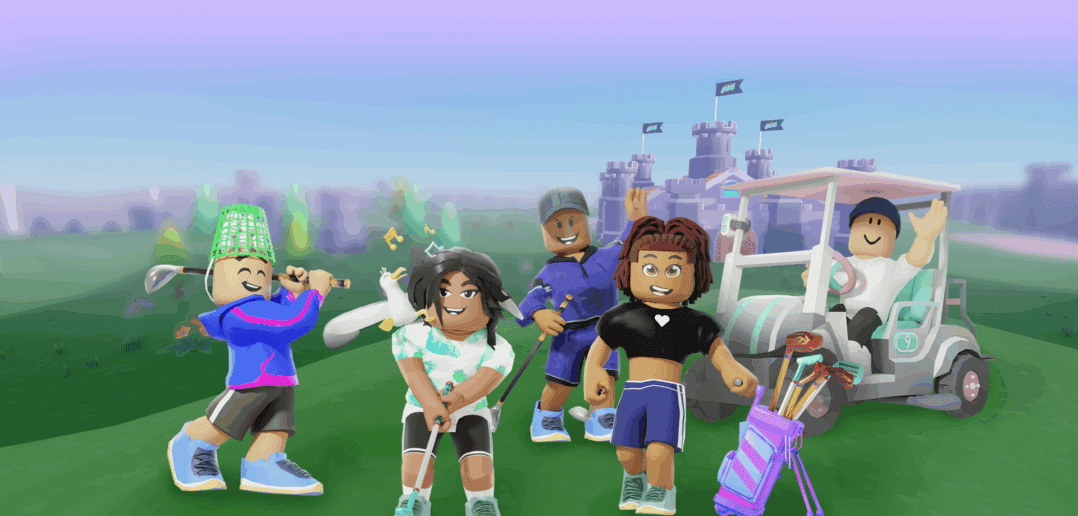Kids still love sports, but how they consume sports media and how they show their fandom is completely different to their parents and grandparents. Roblox is increasingly where they play online, so can it be an ideal hub for fandom, sports education and participation?
Kids’ media has long been dominated by video, from Cartoon Network to YouTube, video is where favourite characters were discovered. Their stories bred fandom, toy sales and millions of licensed lunchboxes the world over, but as technology evolved so has where audiences spend their time.
While we’ve been obsessing over the streaming wars, kids migrated en masse to a different media, gaming. Roblox – once regarded as a “kids game” – is now a content ecosystem, social platform and participatory media channel. Often dubbed ‘the YouTube of gaming’ there are millions of experiences (they aren’t called games, because not all of them are) and new experiences are added daily. Much like YouTube the barriers to activating on Roblox are relatively low, but discovery can be challenging too.
That said, it’s a vibrant, creative space with over 100 million daily active users, and at almost 20 years old it’s far from the young pretender that many assume.
Roblox content on YouTube too has recently crossed the 1 trillion views threshold – that’s not a typo – trillion with a T – and though it’s not at Minecraft levels yet, it is growing fast. So whilst Roblox isn’t replacing sports video, it is fuelling fandom. It offers sports-curious gamers the chance to play games from volleyball, golf, tennis, gymnastics and more (at a time when their fandom may not yet be decided) and as a result some sports rights owners have taken the plunge and joined the platform. They know that if Gen Alpha is to be part of their future in a fragmented media landscape, Roblox is a platform that they can no longer afford to ignore.
Sports is in the middle of a distribution problem where kids are concerned – they aren’t watching live sports on TV anymore. Ofcom’s recent Media Nations report showed broadcast TV viewership among kids continues to decline, while gaming and YouTube dominate screen time. In fact, Roblox sits at the intersection of both – it’s play (moreover, its social play) and increasingly it’s video within experinces. Gameplay can be a pathway into fandom and the implication for sports is that if you aren’t playable in platforms like Roblox, you may be missing fandom in its most formative phase.
So, could Roblox be a hub for sports amongst younger age groups? The key is to think of Roblox as a space for fans that provides:
- a persistent sports experience (always on, unlike broadcast)
- interactivity (unlike passive video)
- community and connection (co-play with friends)
The early adopters – amongst whom are the NFL, Wimbledon, Paris Saint-Germain and The R&A – recognise this shift in how young audiences engage with sports content. Their experiences blend challenge, knowledge development and IP, but more than gameplay they are experiences that facilitate expression and identity too. Users are buying virtual kits and even celebrations related to their favourite teams or players and for some users Roblox sparks fandom before they ever watch a match or pick up a bat.
An excellent recent example is The R&A’s golf experience ‘Just Swing’ which not only aims to demystify some of golf’s more obscure terminology through play (what is a Bogey, what is a Birdie etc) but it also recently partnered with Topgolf in Jakarta to offer a free hour of golf to Just Swing players. Many of those who tried it didn’t just go to Topgolf once but subsequently returned. Some of those young players may become lifelong golfers thanks to a well-designed Roblox experience – and The R&A has the data points to show it.
From broadcast to ‘playcast’?
Given the move towards a more participatory relationship that kids have with media – driven by tech – what if the next generation’s entry point to sport isn’t watching a match? Roblox, and gaming more broadly, reframes what media rights might mean in future, whether you’re the NFL or The Savannah Bananas. Imagine digital rights packages where Roblox becomes your primary youth engagement platform. Kids get live score updates, exclusive merchandise drops, community chat, access to historic clips and gameplay, all in one persistent social environment. It sounds like a pretty good replacement for websites to me.
This is where those from the traditional side of media should be reconsidering distribution models. In the same way we adapted from DVD to YouTube, we must now adapt to immersive, programmable play.
The power of play is something we frequently speak about in kids media in relation to being ‘toyetic’, and those same principles broadly apply to Roblox. Engaging through play isn’t just marketing, it can reinforce the values of teamwork, progression and self-improvement, resilience and more. So, for sports IP looking to build positive, long-term engagement with younger generations, Roblox allows for story-driven experience, education and can promote participation.
All of this is to say, that as part of a media diet that’s healthy, social and purpose-driven Roblox is far from the mindless social gaming platform that many fear. For those working kids and youth media, it doesn’t matter whether we work with animated, toy-based or sports-based IP, it’s time to start considering how they can live in flexible, immersive spaces like Roblox and stop thinking merely about how kids watch. Because their fandom has evolved.




